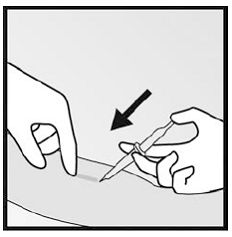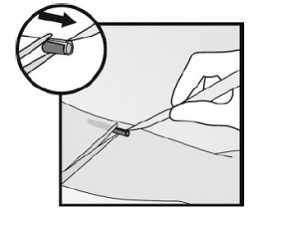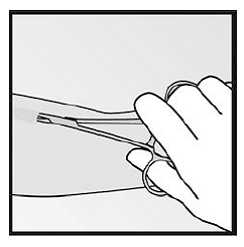How Long for Back Up Method With Nexplanon
Birth control has a promising effect on the functioning of a balanced social life. With 99% effectiveness, contraceptive implants are a long term birth control option for women. Like other birth control methods, the implant releases a hormone called progestin. Hormones are chemicals made in our body and control how different body parts function. As these have a major and lasting effect on the body and its functioning, it is essential to have a complete understanding of it.
Nexplanon is a newer version of the contraceptive implant – Implanon, which was discontinued in 2014 by its manufacturer. They are a long-term birth control option for women. It is radio-opaque i.e., can be seen on X-ray, which is helpful in locating the implant. This X-ray feature is possible due to the presence of barium sulfate present in a small amount in the implant.
This contraceptive implant is a flexible plastic rod of about the size of a toothpick and placed under the skin of the upper arm. The soft, flexible Nexplanon implant is preloaded in a sterile and disposable applicator for use. The slow and steady release of the dose of progestational hormone thickens the cervical mucus and the thin uterine lining called the endometrium. It subdues ovulation, the act of releasing the egg from the ovary. This procedure makes it tougher for the sperm to reach the uterus and difficult for the fertilized egg to attach itself to the uterus.
Etonogestrel Implant, the generic name for Nexplanon, provides contraception for a long period of three years. It becomes effective maximum within seven days of its implant.
There are a lot of precautionary measures that need to be considered when using this implant. Certain mandatory prerequisites are indispensable. Any carelessness in the matter can lead to grave issues causing some lasting damage to the body.
How to Remove Nexplanon?
The Nexplanon implant is a long-term birth control method as it works as a contraceptive for a period of 3 years. After three years, the implant should be removed or replaced with a new one depending on whether one wishes to become pregnant or not.
Preparation
Before starting the removal procedure, the medical practitioner or healthcare provider must read the instructions carefully and study the patient card well. It is important to verify the exact location of the implant in the arm by palpation. Before removal, it must be confirmed if the woman has any allergies to the antiseptic to be used or not.
Procedure



- Locate the implant by palpation and mark the area using a sterile marker
- Clean the area where an incision is to be made and apply an antiseptic
- Give local anesthesia and inject under the implant
- Push the proximal end of the implant down and stabilize it. One may see a bulge showing the distal end of the implant.
- Starting the distal tip makes a long incision of 2mm toward the elbow.
- Push the implant towards the incision gently until the tip is visible. Grip the implant with forceps and gently remove it.
- If the tip of the implant is not visible, insert the forceps into the incision and flip the forceps.
- Using another forceps, carefully dissect the tissue around the implant and clutch the implant out.
- Ensure that the entire implant has been removed and is not broken. The ideal implant length is 4 cm long. It is important to remove the entire implant. In case it is broken, the leftover broken pieces must also be removed.
- Post removal apply the adhesive bandage.



There may be times when the implant migrates and is not found where it was implanted. In such cases using its radiopaque feature, an X-ray is taken to locate the implant. The removal of such migrated implants may require minor surgery.
Nexplanon Post Removal Instructions
Like insertion, the removal procedure of the Nexplanon implant requires care and attention. Equally important is the care post removal. Once the implant is removed, from whichever method, it is important to not neglect the incision area are read the signs if any, the body gives post the removal procedure.
Once the implant is removed, there is no protection against pregnancy. Women are advised to use other methods of birth control like contraceptive pills or condoms if they do not want to get pregnant. One should use a back-up method for the first seven days post removal.
After the Nexplanon implant is removed, it is required that one watches for some signs of warning. There may be some numbness in the arm for a few days. As the numbness wears off, one may experience soreness for a day or two. During this period, over-the-counter pain relievers can be taken to relieve the pain. Cold packs also help in curbing swelling and pain.
-
Post Removal Care
Post removal, the medical practitioner puts up an elastic bandage to be worn for 24 hours. It is important to keep the pressure dressing dry. The dressing is removed after 24 hours, and a bandage is put, which is to be kept for at least 3-5 days. One may also experience some bruising, discoloration or swelling and pain for some weeks post removal. These symptoms should not be of worry as they are normal to happen. Once the incision heals, one can easily go about doing their daily household chores, holding a baby, or carrying a pile of books. There is no fear of putting pressure on it or bumping it into something.
However, it is a matter of worry if one encounters redness, consistent pain, high body temperature (Fever more than 101 degrees F), and drainage from the insertion site. If any of these signs appear immediately, contact the health care provider.
Side Effects of Nexplanon
There are certain side effects attached to the usage of the Nexplanon implant. The signs may be rare, but some people may experience some deadly side effects of the implant. The most commonly found side effects are irregular bleeding and weight gain. As per a study, bleeding irregularity is the highest rated side effect discovered as part of the procedure.
Other adverse reactions to follow included consistent pain, weight gain, acne, headache, emotional lability, and depression.
Along with this, there are other reactions that may demand medical help and advice. Some of them are as follows-
- Allergy related side effects – rashes, itching, blisters, peeled skin, hives
- Liver related side effects – dark urine, yellowness in eyes and skin, fatigue, loss of appetite.
- Blood Pressure related side effects – headache, dizziness, fainting, change in eyesight
- Lungs related side effects – wheezing, breathing problem, trouble in swallowing and talking, heaviness in chest
- Stomach related side effects- upset stomach, vomiting, bloating, fever, pain in the belly area
- Others – eyesight issue,
- Vaginal bleeding
- Depression
- Swollen breast, pain in breast or nipples, discharge from nipples, the feeling of lump or soreness in the breast
- Abnormal Weight Gain
- Metabolic and nutrition disorders
- Adverse effect on the immune system
- Urinary disorders
- Ectopic Pregnancy
- Urinary Tract Infection
-
Possible Complications
The complications relating to the implant include bruising, pain, irritation, itching, scarring, paresthesia, and fibrosis at the implant area. It is also found that the implant migrates into the chest wall. In some cases, the implant was found either in the pulmonary artery or within the vasculature. Such migration into the artery causes chest pain or dyspnea. The solution to these are surgeries to remove the implant from such forbidden areas.
As per a clinical trial conducted on Nexplanon, the implant site reactions were reported at around 8.6% of women from the women undertaken in the study. The most recurrent implant site complication was Erythema. This was reported shortly after the insertion and found to occur in 3.3% of the women under study. In addition to this, the swelling was reported at 0.7%, pain at 1%, bruising at 2%, and hematoma at 3%.
FAQ
-
How long does Nexplanon protect you from pregnancy?
The nexplanon is a long term birth control method. It protects one from pregnancy for a period of 3 years. It cannot be used if one is pregnant or has had a baby recently.
-
Does the Nexplanon protect against sexually transmitted infections (STIs) or diseases?
Nexplanon does not protect against sexually transmitted infections (STIs) or diseases (STDs). One should use a condom to protect themselves from such diseases.
-
Why do you need to have Nexplanon replaced after 3-4 years?
The Nexplanon implants come with an expiry date and must be removed by the end of the third year. It should either be removed or replaced with a new implant at the time of removal in case one wants to delay pregnancy and continue using a contraceptive. If it is not replaced, other forms of birth control should be used right away in order to ward off unwanted pregnancies. In case one needs to undergo major surgery or is required to be on bed rest for a long period of time, the Nexplanon implant must be removed for that period. If not removed, the implant may affect the medical test results.
-
What is it like having the Nexplanon implant removed?
The removal of the Nexplanon implant requires that the healthcare provider reads the instructions of the removal carefully and study the patient card for medical history and knowing the location of the implant. The removal procedure of the implant that is palpable, and that is non-palpable have been discussed above in detail.
Reference Links
- Nexplanon Removal Procedure: Reference from rxlist.com
- Post Removal Instruction & Care: Reference from nmhealth.org
- Side Effects and Complications: Reference from webmd.com
How Long for Back Up Method With Nexplanon
Source: https://embrywomenshealth.com/nexplanon-removal-side-effects-aftercare/
0 Response to "How Long for Back Up Method With Nexplanon"
Enregistrer un commentaire